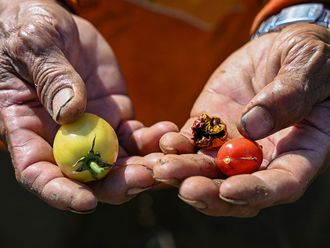Manila: At least 24 deaths due to the water-borne disease leptospirosis has been reported in Cagayan de Oro and Iligan cities after typhoon Washi caused unprecedented flooding in the two Southern Philippine urban centres.
A report by the National Disaster Risk Reduction Management Council (NDRRMC) showed that a month after tropical storm Washi (local name Sendon) struck northern Mindanao, health authorities recorded 377 leptospirosis cases.
Leptospirosis is a highly transmissible bacterial infection transmitted to humans who get in contact with the urine of infected animals through wounds and breaks in the skin such as when wading through floodwaters.
Wading through water
The disease, also called Weil's Syndrome, attacks the internal organs, particularly the liver, causing damage to the body's immune system. The disease has an incubation period of four days to two weeks.
"As of January 15, 2012, a total of 377 leptospirosis cases have been recorded and admitted to hospitals in the Northern Mindanao region: 258 in Cagayan de Oro [eight died] and 119 in Iligan City [16 died]," the NDRRMC reported.
Earlier, authorities feared the possibility of an outbreak of leptospirosis and dengue fever as floodwaters left by Washi remain in certain districts of the flood affected areas. Most of the people in lower areas in Cagayan de Oro and Iligan City had been forced to wade through several metres of floodwaters.












